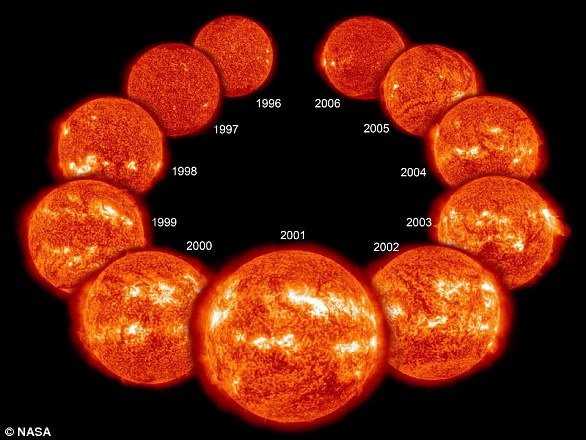The Sun erupts with its most powerful solar flare in 7 YEARS – as experts warn the enormous explosion could wreak havoc on GPS and satellites
It looks like a flash of bright light in the reflection of a car window.
But a stunning new image from NASA actually shows a massive solar flare: a powerful explosion in the sun’s atmosphere.
The dramatic event occurred at 10:34 PM GMT (5:34 PM EST) on Thursday and was captured by NASA’s Solar Dynamics Observatory, which continuously watches the sun.
Experts say the resulting radiation aimed at Earth could affect power grids and navigation signals, or pose risks to spacecraft and astronauts, although it could also cause beautiful auroras in the sky.
It is the most powerful solar flare in seven years, as a gust in September 2017 caused radio disruptions for hours.
NASA’s Solar Dynamics Observatory captured this image of a solar flare (as seen in the bright flash above left) on February 22, 2024. The image shows a subset of extreme ultraviolet light that highlights the extremely hot material in the solar flares and has been colorized. in bronze
As NASA explains, solar flares are “powerful bursts” of high-energy radiation from the sun’s surface that can cause disruptions on Earth.
“Flares and solar eruptions can affect radio communications, power grids and navigation signals, posing risks to spacecraft and astronauts,” the agency said.
In general, experts describe the strength of solar flares by giving them a letter (from A, B, C, M and X) followed by a number (from 1 to 9).
This new flare is classified as an
This one is X6.3, not as big as the wave of massive solar flares in September 2017, which included an X9.3 and an X8.2.
a study in the journal Space Weather later concluded that the 2017 flares damaged radio communications during hurricane response efforts in the Caribbean.
This week’s X6.3 solar flare is also the largest of three that have occurred since Wednesday, according to the National Oceanic and Atmospheric Administration (NOAA).
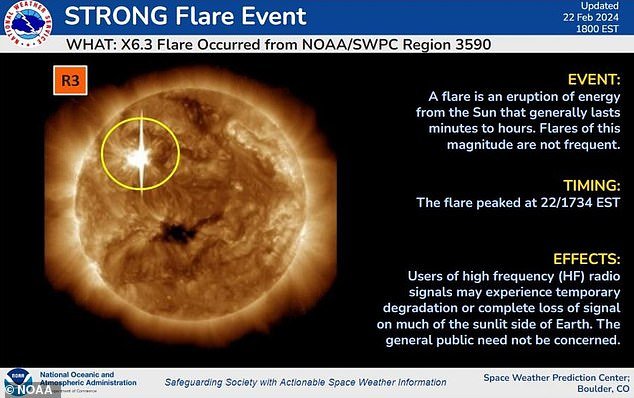
According to the National Oceanic and Atmospheric Administration (NOAA), the X6.3 solar flare is also the largest of the three that have occurred since Wednesday. The new NASA image also reveals a dark ‘coronal hole’ in the Sun further south, which looks like a large dark spot
NASA’s Solar Dynamics Observatory captured these images of a solar flare – as seen in the bright flashes in the upper left region of the sun – on February 21 and 22. The images show a subset of extreme ultraviolet light that highlights the extremely hot material in the solar flares. and it is colored in blue-green
The other two were X1.8 and X1.7 – so while they were also X-class torches, they weren’t as powerful.
It is unclear what damage, if any, they caused; MailOnline has contacted NASA for more information.
According to Royal Museums Greenwich, it typically takes two days after the flare is observed on the sun for the particles to reach Earth.
Upon their arrival, these particles can result in an aurora – a spectacular flash of vibrantly colored light in the sky, visible near the Earth’s poles.
The Met Office expects the aurora to be visible in the far north of Scotland and similar geomagnetic latitudes on Sunday ‘under favorable viewing conditions’ – i.e. free of cloud and light pollution.
Solar flares differ from coronal mass ejections (CMEs), in which solar material is ejected in the form of huge bubbles of charged particles (plasma) containing magnetic field lines.
But both may be responsible for the aurora, also known as the Northern Lights or ‘aurora borealis’ in the Northern Hemisphere and the Southern Lights or ‘aurora australis’ in the Southern Hemisphere.
The new NASA image also reveals a dark ‘coronal hole’ in the Sun further south, which looks like a large dark spot.
Coronal holes – a common phenomenon on the Sun – are areas of open magnetic field from which solar wind rushes into space at high speed.
They also cause auroras and disruptions to Earth’s communications systems.
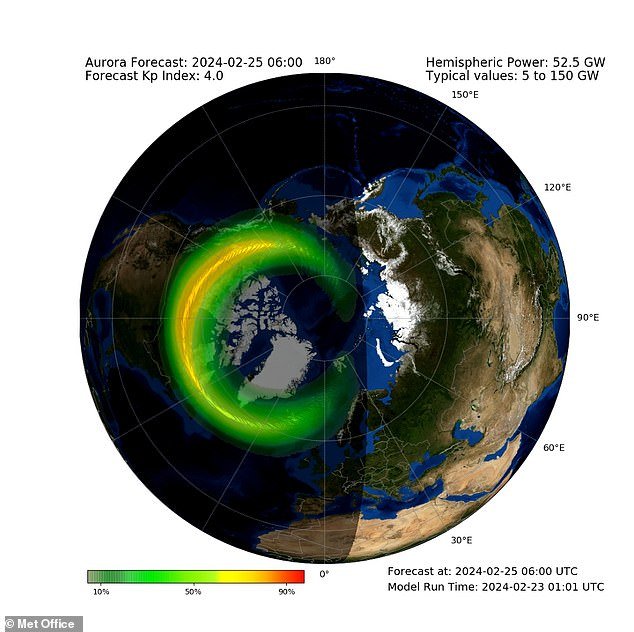
Sunday: A Met Office animation shows the aurora oval – the ring-like range of polar activity that defines the range of the Northern Lights and where it will be most visible
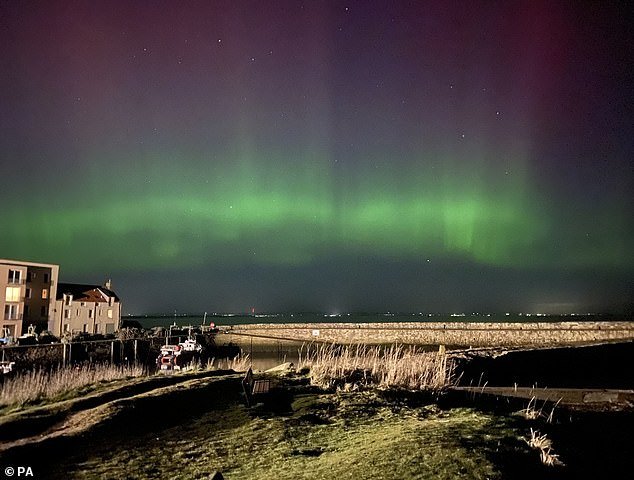
The Northern Lights seen over St Leonard’s Head in St Andrews, Scotland, February 27, 2023
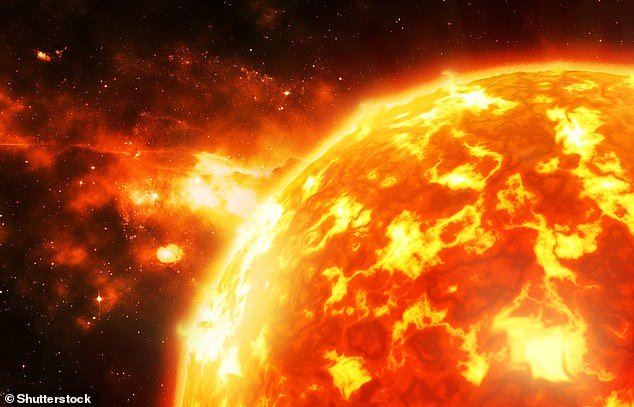
A solar flare is a massive explosion on the sun that occurs when energy stored in ‘twisted’ magnetic fields is suddenly released (file photo)
NOAA also said the X6.3 solar flare is the largest to occur so far during the current solar cycle.
The solar cycle is the cycle that the sun’s magnetic field goes through approximately every eleven years before it completely reverses and the sun’s north and south poles switch places.
The current solar cycle, number 25, began in 2019 and is expected to continue until about 2030.
As the sun’s magnetic fields change, so does the amount of activity on our star’s surface, NASA said.
Although the otherwise violent surface of the Sun takes on a calmer and almost idyllic appearance during solar minimum, this false calm can also lead to disturbances of the Sun known as solar storms.
Solar storms during this solar minimum still occur due to the occurrence of solar flares – explosions on the Sun that release energy stored in ‘twisted’ magnetic fields.
Solar minimum is also when the sun has the fewest ‘sunspots’: cooler parts of the sun’s surface, caused by enormous changes in the magnetic field.
But over time, solar activity and the number of sunspots increase as solar maximum approaches.

